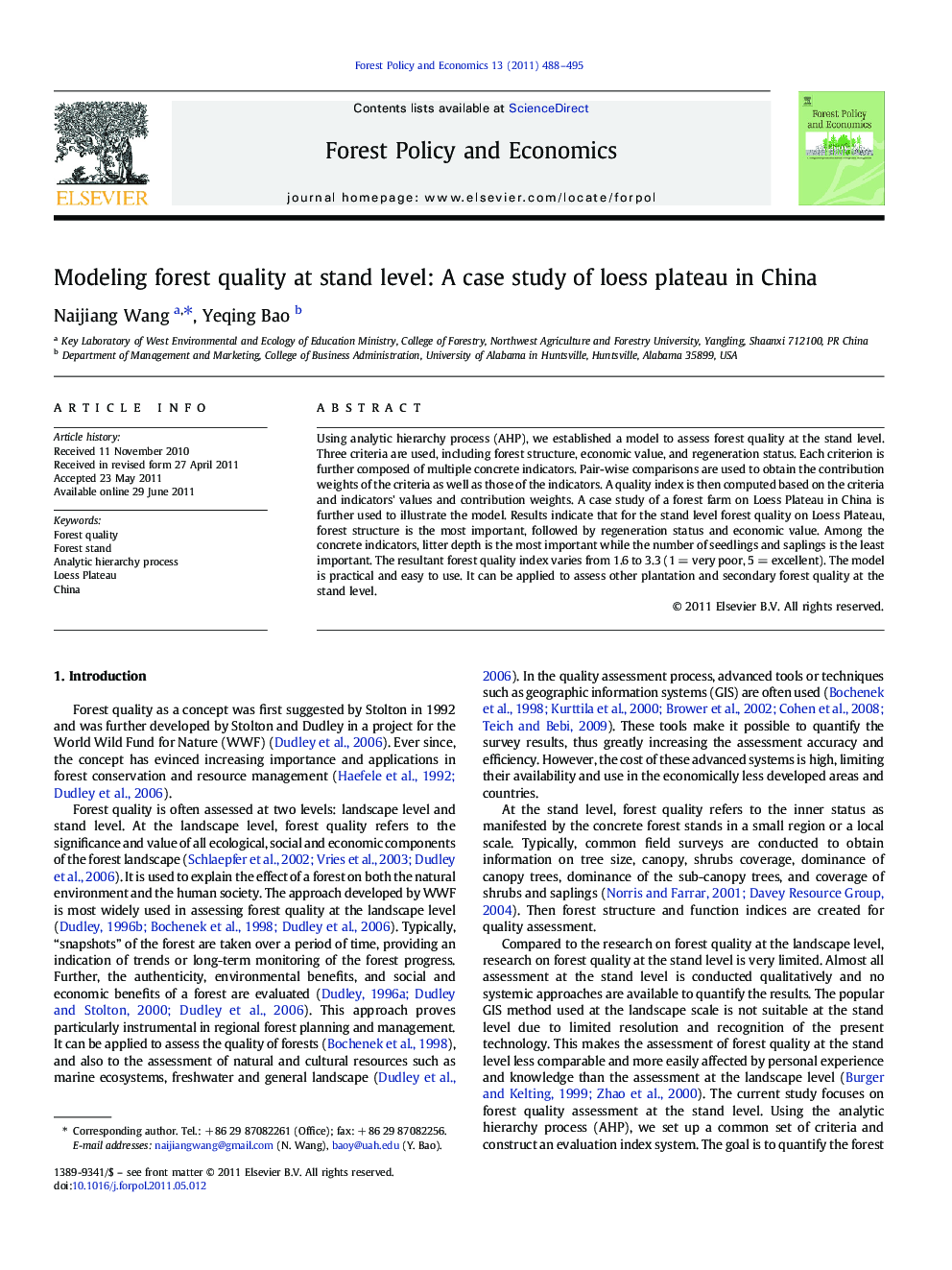| Article ID | Journal | Published Year | Pages | File Type |
|---|---|---|---|---|
| 92147 | Forest Policy and Economics | 2011 | 8 Pages |
Using analytic hierarchy process (AHP), we established a model to assess forest quality at the stand level. Three criteria are used, including forest structure, economic value, and regeneration status. Each criterion is further composed of multiple concrete indicators. Pair-wise comparisons are used to obtain the contribution weights of the criteria as well as those of the indicators. A quality index is then computed based on the criteria and indicators' values and contribution weights. A case study of a forest farm on Loess Plateau in China is further used to illustrate the model. Results indicate that for the stand level forest quality on Loess Plateau, forest structure is the most important, followed by regeneration status and economic value. Among the concrete indicators, litter depth is the most important while the number of seedlings and saplings is the least important. The resultant forest quality index varies from 1.6 to 3.3 (1 = very poor, 5 = excellent). The model is practical and easy to use. It can be applied to assess other plantation and secondary forest quality at the stand level.
Research highlights► Using analytic hierarchy process (AHP), a model is established to quantitatively assess forest quality at the stand level. ► A case study of a forest farm on Loess Plateau in China is further used to illustrate the model. ► The study contributes to the literature by making the assessment of forest quality at the stand level more comparable and less easily affected by personal experience and knowledge than before.
